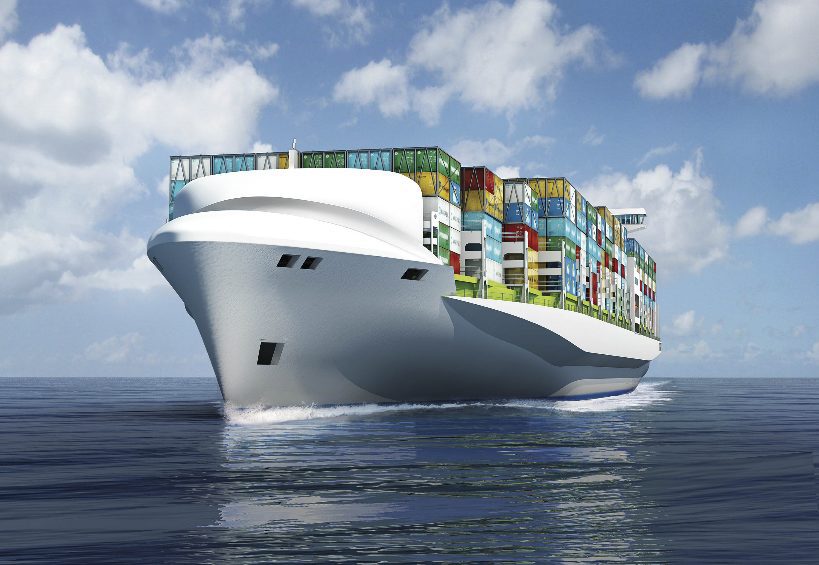An illustration of DNV’s Quantum containership concept. Image: DNV
Oslo: The ratification of IMO’s Ballast Water Management Convention is not yet certain, and the global sulphur limit in 2020 is subject to a review in 2018. What is certain is the new emission control areas and the energy efficiency design requirements that will soon enter into force. Certain or uncertain – all have a profound effect on the shipping industry’s uptake of new technologies. DNV’s look into the coming eight years, gives a clear answer: the world’s fleet composition is going to change as we head for 2020.
DNV published Shipping 2020 this year to communicate the results of a comprehensive scenario studying exercise covering the world fleet up to 2020. Based on expected market developments, regulatory changes, fuel prices, cost and availability of new technology and specific shipowner requirements, the model explores the technologies with the best payoff that will also ensure compliance with the relevant environmental requirements.
Economic power is shifting to Asia, impacting trade routes and the demand for vessels. Gas and oil prices are expected to decouple, and shale gas is a game changer likely to increase gas availability. Amidst these and other market forces, four different scenarios for the future are evaluated.
“With the world economy in a fragile condition, it is not only financial analysts, bankers and policy makers who want to know what the world will look like towards the end of this decade. The shipping community is, quite rightly, asking the same questions,” says Tor Svensen, president of DNV Maritime and Oil and Gas. “Predicting the future is a risky business. However, our objective is to share our views on technology uptake towards 2020, and beyond, and to stimulate both discussion and correct decision-making.”
The use of scrubbers may be minimal until the global SOx limit is implemented. The ECAs is not expected to drive a significant number of scrubbers. However shipowners may make room for a scrubber in ships built between now and 2019, but they are likely to defer the installation itself until the technology has matured further and the global sulphur limit is confirmed.
Delays in the ratification of the Ballast Water Management Convention are simply expected to create a larger backlog of technology orders with little variation in the phasing in time of the technology. The main peak for technology uptake comes in 2017 and will be driven to a large extent by US regulations. After 2019, retrofitting is expected to be largely completed, unless the IMO decides to relax the schedule.
The EEDI (Energy Efficient Design Index) regulation requires newbuildings in 2025 to be 30% more energy efficient than today’s average ship. This will drive implementation of energy efficiency measures and LNG as fuel. The question remains whether shipowners will press ahead of the EEDI schedule and start building these ships today.
Other key findings within DNV’s Shipping 2020 report are:
- More than 1 in 10 newbuildings in the next eight years will be delivered with gas fuelled engines.
- In 2020, the demand for marine distillates could be as high as 200-250 million tonnes annually.
- Newbuildings in 2020 will emit up to 35 per cent less CO2 than today’s ships.
- At least 30 per cent of newbuildings will be fitted with exhaust gas recovery or selective catalytic reduction systems by 2016.
-By Per Wiggo Richardsen. Via DNV
Unlock Exclusive Insights Today!
Join the gCaptain Club for curated content, insider opinions, and vibrant community discussions.

 Join The Club
Join The Club













